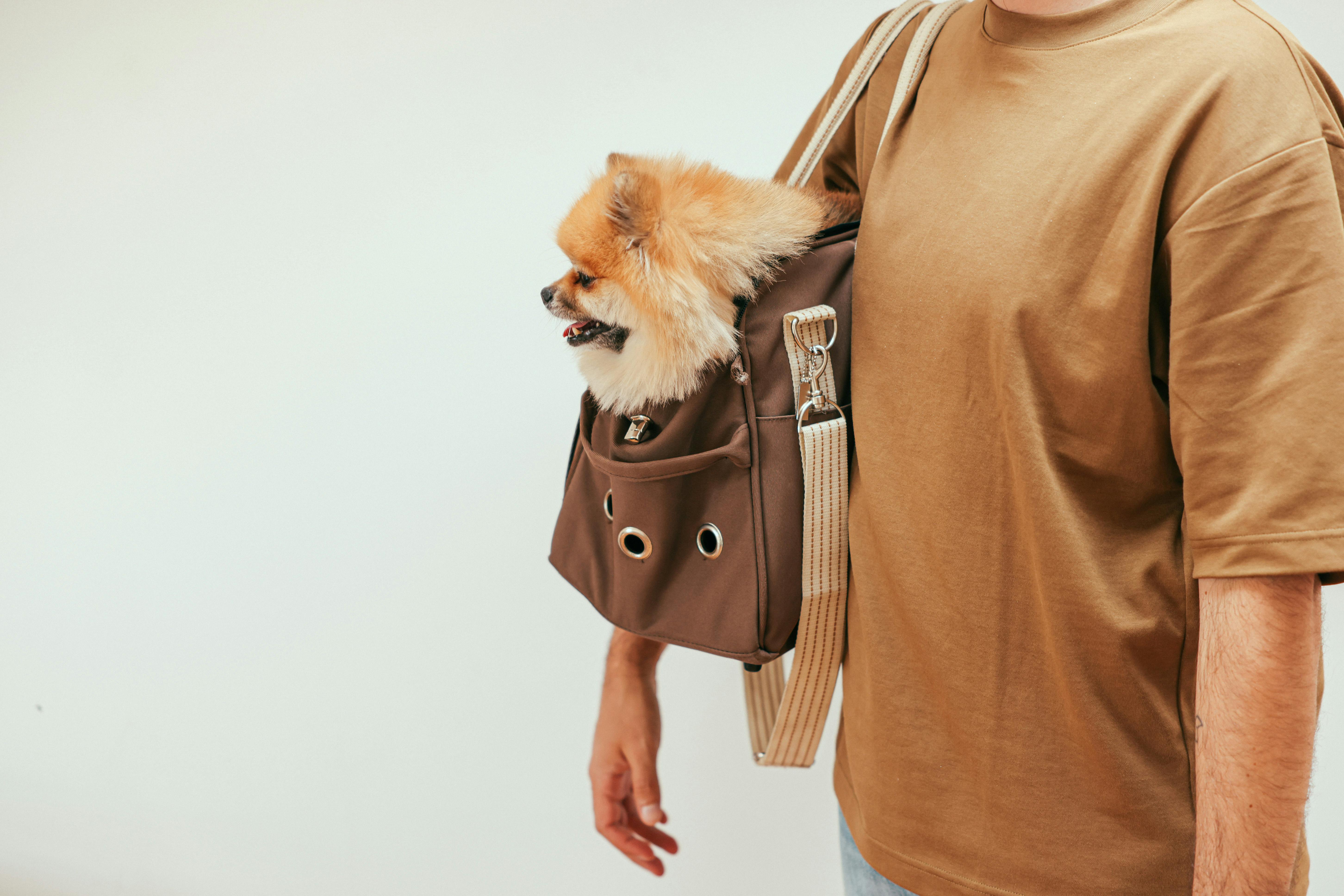Signs Your Small Breed Dog Is Fully Grown: A Complete Guide for Dog Owners

Strong 8k brings an ultra-HD IPTV experience to your living room and your pocket.
Small breed dogs have become increasingly popular among urban dwellers, families, and individuals alike. Their compact size, lower exercise needs, and charming personalities make them ideal companions for modern living. However, one question commonly asked by pet parents is, “How do I know when my small breed dog is fully grown?”
Understanding your dog’s growth journey is essential for proper nutrition, healthcare planning, training, and overall well-being. This comprehensive guide will walk you through everything you need to know about recognizing the signs of physical and emotional maturity in small dog breeds.
Why Recognizing Full Growth Matters for Small Breed Dogs
Most owners are eager to witness their puppy grow into a healthy adult. But beyond curiosity, there are several important reasons why it’s critical to know when your dog is fully grown:
- Nutritional Adjustments: Adult dogs require different food formulas compared to puppies.
- Exercise Planning: Growth impacts how much activity your dog needs.
- Medical Decisions: Vets often recommend spaying or neutering only after certain growth milestones.
- Behavioral Training: Adult dogs require a different approach to training and mental stimulation.
Failing to identify when your small dog has matured can lead to overfeeding, inadequate exercise routines, and delayed medical decisions.
When Do Small Breed Dogs Stop Growing?
Small breed dogs typically reach their full size earlier than medium and large breeds. Most are fully grown between 8 to 12 months of age. However, this timeline can vary depending on genetics, nutrition, and breed characteristics.
| Breed | Approximate Age of Full Growth |
| Chihuahua | 8-10 months |
| Toy Poodle | 9-11 months |
| Shih Tzu | 10-12 months |
| Pomeranian | 9-11 months |
| Miniature Dachshund | 10-12 months |
| Yorkshire Terrier | 9-12 months |
| Teacup Cavapoo | 7-9 months |
Key Signs That Your Small Breed Dog Is Fully Grown
The signs of full growth aren’t always obvious at first glance. Owners must consider a combination of physical, behavioral, and veterinary indicators to assess whether their dog has reached adulthood.
1. Stabilization in Weight and Height
One of the most straightforward indicators is a plateau in physical development. During puppyhood, small breed dogs grow rapidly. However, if your dog hasn’t gained noticeable height or weight over the past four to six weeks, it’s a strong sign they’ve stopped growing.
How to Track:
- Weigh your dog biweekly on a digital scale.
- Measure height at the withers (shoulder area) monthly.
- Compare growth trends over time.
If these metrics remain consistent over multiple observations, your dog has likely reached their adult size.
2. Coat Texture and Color Maturation
Puppies are usually born with softer, finer coats. As they grow, the texture, density, and even color of their coat may change.
Adult Coat Indicators:
- Thicker, shinier, or slightly coarser texture
- Reduction in “puppy fuzz”
- Slight darkening or lightening of color in certain breeds
The transition to an adult coat typically begins around 5–6 months and completes by 9–12 months. Groomers often notice this change before owners do.
3. Permanent Adult Teeth Are Fully In
Teeth development is a reliable biological marker of maturity. Dogs develop two sets of teeth—deciduous (puppy) teeth and permanent adult teeth.
Milestones to Observe:
- Puppy teeth begin falling out by 3–4 months
- Permanent teeth emerge by 6–7 months
- Full set of 42 adult teeth by 7–8 months
Schedule a veterinary dental check-up to ensure proper alignment and detect issues like retained baby teeth, which can sometimes interfere with chewing and cause discomfort.
4. Closed Growth Plates
Growth plates (epiphyseal plates) are soft areas at the ends of long bones. These plates are responsible for bone elongation and eventually harden when growth is complete.
Why It Matters:
- Open growth plates = ongoing bone growth
- Closed growth plates = skeletal maturity
A veterinarian can assess growth plate closure through radiographs (X-rays). This is especially crucial if your dog is engaging in activities involving high-impact movements like agility, fetch, or jumping from furniture.
In small breeds, growth plate closure usually occurs by 12 months.
5. Behavioral and Emotional Stability
While physical development can be measured, emotional maturity is more subtle but equally important.
Signs of Emotional Maturity:
- Reduced hyperactivity and destructive behavior
- Better impulse control (especially around distractions)
- Decreased separation anxiety
- More consistent sleep and rest patterns
- Improved response to commands and training cues
If your small breed dog has become more settled, focused, and less impulsive, it's a strong sign they are reaching emotional maturity.
However, note that some small breeds retain their "puppy-like" energy even into adulthood, so behavioral development may lag slightly behind physical growth.
6. Appetite and Eating Habits Stabilize
Puppies typically have a high metabolism and an insatiable appetite. As growth slows, so does their need for high-calorie meals.
What to Look For:
- Reduced interest in frequent feedings
- Slower eating pace
- Increased consistency in bowel movements
- No further need for puppy-specific food
At around 10–12 months, you should transition your dog to adult food with adjusted protein and fat levels to prevent obesity.
7. Gender-Specific Maturity Milestones
Sexual maturity does not always equate to full body development, but it’s an important indicator that your dog is nearing adulthood.
Female Dogs:
- First heat cycle typically between 6–9 months
- More common in smaller breeds to have earlier cycles
- Behavioral changes like nesting or vocalization
Male Dogs:
- Lifting leg to urinate around 6–8 months
- Marking behavior may increase
- Interest in female dogs becomes noticeable
While these changes signal hormonal maturity, they often precede full skeletal maturity.
8. Proportional Paw and Limb Appearance
A common myth is that you can predict your dog’s adult size based on their paws. While not a precise tool, paw size can help.
In puppies, paws often appear oversized. Once they grow into them and their limbs look proportionate, it usually signals that physical growth has stopped.
This sign should not be used in isolation but can support other maturity markers.
The Role of Genetics and Breed Size in Growth
Breed-specific traits and genetics play a substantial role in determining how and when a dog reaches maturity.
- Toy breeds (under 10 pounds) tend to stop growing sooner, typically by 8–9 months.
- Small breeds (10–20 pounds) may continue until 12 months.
- Crossbreeds like the Teacup Cavapoo—a cross between a Cavalier King Charles Spaniel and a Toy Poodle—typically finish physical growth by 7–8 months but may continue developing emotionally for several months afterward.
Purebreds often follow predictable growth patterns, but crossbreeds and designer breeds may vary more widely.
Health and Lifestyle Adjustments After Full Growth
Once you’ve determined your dog has reached adulthood, several aspects of their care routine should evolve to support long-term wellness.
1. Nutritional Adjustments
- Switch to adult-formulated dog food
- Monitor weight regularly to prevent obesity
- Maintain portion control and meal schedules
2. Physical Activity
- Transition from short puppy playtimes to consistent walks and structured play
- Introduce low-impact cardio to maintain joint health
- Avoid overexertion if your dog is a brachycephalic breed (like Pugs or Bulldogs)
3. Veterinary Care
- Schedule annual wellness check-ups
- Begin routine dental cleanings
- Discuss options for spaying or neutering, if not already completed
4. Mental Stimulation and Enrichment
- Offer puzzle toys and scent games
- Continue or expand on basic obedience training
- Provide socialization opportunities with other dogs and humans
Common Mistakes Owners Make About Growth Milestones
Mistake 1: Keeping Dogs on Puppy Food for Too Long
Puppy food is calorie-dense and can lead to weight gain if not adjusted once growth stops.
Mistake 2: Assuming Emotional Immaturity Means Physical Immaturity
Some dogs remain playful or anxious into adulthood, especially small breeds. Emotional behaviors are not always tied to physical maturity.
Mistake 3: Overlooking the Importance of X-rays
Skipping radiographs can lead to inaccurate assessments of growth plate closure, particularly important before introducing athletic activities.
Mistake 4: Comparing Dogs of Different Breeds
Every breed and individual dog grows at a different pace. Breed comparisons are not a reliable method for assessing maturity.
Frequently Asked Questions
How Can I Tell If My Dog Is Just Small or Fully Grown?
Compare your dog’s weight and height to breed standards and monitor for stability over several weeks. If growth has plateaued and adult teeth are in place, your dog is likely fully grown.
Can My Dog Still Grow After a Year?
It’s uncommon for small breeds to grow significantly after 12 months. Some minor muscle development or weight gain may occur due to lifestyle changes, but skeletal growth typically halts before one year.
Is Neutering Early Harmful to Growth?
Spaying or neutering before growth plates close can potentially affect bone development. Most veterinarians recommend waiting until at least 6–9 months for small breeds.
Conclusion
Recognizing the signs that your small breed dog is fully grown is more than a milestone—it’s a responsibility. From physical indicators like weight and coat texture to behavioral changes and dental development, multiple clues will help you determine when your pup has entered adulthood.
Being informed allows you to make smarter decisions regarding nutrition, exercise, medical care, and training. Whether you’re raising a curious Shih Tzu or a calm and affectionate Teacup Cavapoo, understanding these signs ensures a smoother transition from puppyhood to adulthood.
By paying attention to the nuances of your dog’s development, you not only enhance their quality of life but also build a stronger, more responsive relationship that lasts a lifetime.
Note: IndiBlogHub features both user-submitted and editorial content. We do not verify third-party contributions. Read our Disclaimer and Privacy Policyfor details.



